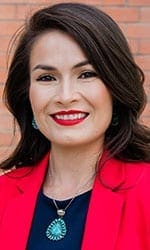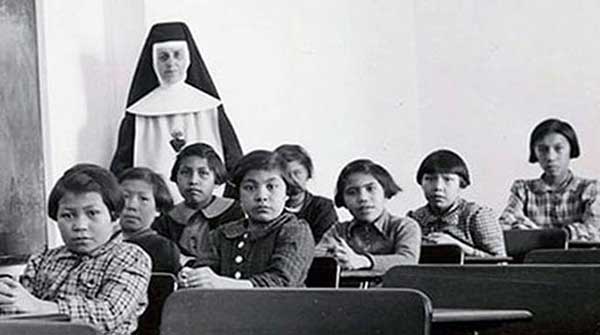The residential school system is the focal point of truth and reconciliation efforts with Indigenous peoples in Canada. But a University of Alberta education researcher says the schools, which operated in Canada until 1996, aren’t the whole story.

Professor Tiffany Prete
Dr. Tiffany Prete, an adjunct professor in the Department of Educational Policy Studies, has been conducting research into the history of residential schools in her home community, the Blood Reserve in southern Alberta. She says that starting with the signing of Treaty 7 in 1877 and an influx of religious missionaries, nine school models were established on the Blood Reserve that shows the development of what became the residential school system.
“We talk about the Indian residential school system, but there’s so much more that happened in addition to residential schools that people don’t know about,” Prete said.
“The overarching goal of the Canadian government was to assimilate Indigenous children into a Eurocentric way of life. The government would come up with an idea of how they could achieve this goal. They would implement a particular school model and see what its results were. When the school model did not work the way they wanted it to, they would make adjustments to their plan and implement a new school model to see if that improved their assimilation efforts.”
Prete said that before the COVID-19 pandemic, she conducted extensive documentary research at museums and archives across Canada. She then took her findings back to the Blood Reserve to discuss and analyze them with Blood elders, who are also residential school survivors. Though the research is specific to her community, she said her findings would be similar in other Indigenous communities across Canada where these policies and practices were also applied.
“This research is specific to my Blood people, and we were considered to be a bit unique because we are the largest land-based reserve in Canada with a large band membership,” Prete said.
“Every policy that the Canadian government had with regard to education for Indigenous children was something that took place on my reserve because we had the band membership and lands to do so. Other reserves which had a smaller band membership and lands may have had to go to a different reserve to receive their education.”
As someone whose parents, grandparents and great-grandparents experienced these educational models designed to assimilate them, Prete said her research has deepened her understanding of intergenerational trauma.
“As an intergenerational survivor, my experiences and needs are different from people who experienced residential schools first-hand. There is this tendency to think that because residential schools and the trauma of residential schools happened in the past, they stay in the past. But the trauma still very much affects Indigenous communities,” Prete said.
“I am aware that I’m colonized, but I didn’t realize the extent to which my life is intimately intertwined with the Indian Act and the way it has affected my life and the lives of my children. Until I was able to look at the documents and the policies and the intent the Canadian government had envisioned for someone like myself and my children, I hadn’t realized how much my life had been impacted by that.”
Prete was recently awarded a Social Sciences and Humanities Research Council of Canada (SSHRC) post-doctoral fellowship, which she plans to use to create a book from her research findings. She said her community is excited to see a history of the Blood Reserve written from the perspective of the Blood Tribe.
“One of the number one questions I get asked by intergenerational survivors is, ‘What happened?’ Many of the Indian residential school system survivors don’t talk about their experiences, so we don’t fully understand what happened,” Prete said.
“I’m hoping the book will be one way to enlighten Blood Tribe members, as well as the general public, about what exactly happened in these policies, what the government’s intent was, and to be able to start having those conversations between family members, between the generations, so we can engage in healing.”
Prete added that she also wants to use her findings to support educators in advancing truth and reconciliation.
“I know teachers would like to learn how to teach on Indian residential schools in their classrooms. This is one of the calls for educational reform in Alberta, to include more about treaties and Indian residential schools, so I’d like to develop resources to help teachers and students better understand Canada’s colonial history, which is something that all Canadians living on this land should know about.”
Dr. Tiffany Prete presents “Stolen Niitsitapi (the Real People) Children: Canada’s Assimilative Tactics Revealed” at 11:55 a.m. on Sunday, May 30, at the Conference of the Canadian Society for the Study of Education, part of the Congress of the Social Sciences and Humanities 2021 hosted by the U of A.
| By Scott Lingley
This article was submitted by the University of Alberta’s Folio online magazine. The University of Alberta is a Troy Media Editorial Content Provider Partner.
© Troy Media
Troy Media is an editorial content provider to media outlets and its own hosted community news outlets across Canada.


